35°40′41″N 139°42′54″E / 35.67806°N 139.71500°E
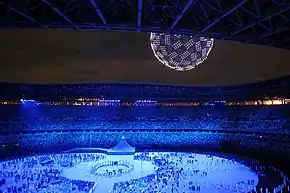 The "Imagine" portion featured drones that project the Tokyo 2020 logo shapes and the globe itself. | |
| Date | 23 July 2021 |
|---|---|
| Time | 20:00 – 23:50 JST (UTC+9) |
| Venue | Olympic Stadium |
| Location | Tokyo, Japan |
| Theme | "Moving Forward: United by Emotion"[1][2] |
| Filmed by | OBS on behalf of the Japan Consortium (NHK, NTV, FTV, and TBS) |
| Footage | The Tokyo 2020 Opening Ceremony - in FULL LENGTH! on YouTube |
The opening ceremony of the delayed 2020 Summer Olympics took place on 23 July 2021 at Olympic Stadium, Tokyo,[3] and was formally opened by Emperor Naruhito.[4] As mandated by the Olympic Charter, the proceedings combined the formal and ceremonial opening of this international sporting event, including welcoming speeches, hoisting of the flags and the parade of athletes, with an artistic spectacle to showcase the host nation's culture and history. The majority of the artistic spectacle was pre-recorded, with live segments performed adhering to social distancing to athletes, officials and a small VIP audience.[5][6] The ceremony marked the 125th anniversary of the 1896 Summer Olympics in Athens—the inaugural edition of the modern Olympic Games.
The theme of the 2020 Olympic and Paralympic Ceremonies was Moving Forward, which referenced the global COVID-19 pandemic.[2] The opening ceremony theme was the Tokyo 2020 motto United by Emotion, with the aim to "reaffirm the role of sport and the value of the Olympic Games."[1] The ceremony expressed responses to the pandemic by the athlete community, congratulate front-line workers, and included themes of lament, waiting and hope. The ceremony also showcased Japanese popular culture such as Japanese theater, video games, and variety shows, such as Kasou Taishou. For the first time in an Olympic opening ceremony, a minute of silence was observed in honor of the Munich massacre's 50th anniversary at the 1972 Summer Olympics.[7][8]
Preparations
January 2017–December 2020: Original plans

The Tokyo Organising Committee of the Olympic and Paralympic Games (TOCOG) gave the first report of preparations in December 2017, with the release of the "Basic Policy" document for the Olympic and Paralympic ceremonies.[9] The document was based upon feedback from experts and opinions of the Japanese public and includes the foundational elements for the positioning and overall concept of the four ceremonies. The Olympic opening ceremony is to introduce the themes and concepts of the four ceremonies, including peace, coexistence, reconstruction, the future, Japan and Tokyo, the athletes and involvement.[10]
Between July 2018 and December 2020, Mansai Nomura, an actor in traditional Japanese theater, was the chief creative director.[11][12] Marco Balich of Balich Worldwide Shows, is the Senior Adviser to the Executive Producer. Balich was involved as producer of the ceremonies of the 2006 Winter Olympics, 2014 Winter Olympics and the 2016 Summer Olympics, and has done other international ceremonies such as the 2019 Summer Universiade and the 2019 Pan American Games in Lima. In July 2019, he mentioned that his involvement will be in partnership with the Japanese advertising company Dentsu.[13] Dentsu's creative director for these ceremonies, Kaoru Sugano, resigned in January 2020 over harassment claims.[14]
The new National Stadium, called Olympic Stadium during the Games, served as the main stadium for the opening ceremony. Demolition of old National Stadium was completed in May 2015. Construction of the new stadium began at the site on 11 December 2016. The stadium was handed over to the IOC on 30 November 2019 for preparations. Had the pandemic not happen, capacity of the stadium during the Olympic Games would have been 60,102, including account press and executive seating areas.[15] Before the announcement of barring spectators was made, ticket prices for the Opening Ceremony were expected to range between ¥12,000 and ¥300,000.[16][17]
Previous Olympic opening ceremonies in Japan, such as the 1998 Winter Olympics opening ceremony in Nagano, mixed ancient Japanese cultural elements with themes of international peace.[18] Reports from Inside the Games and Kyodo News in January 2020 suggested that there would be a bigger focus on Japanese technology and its popular culture in this ceremony.[19] According to reports from Shūkan Bunshun, the original program would include numerous references to J-pop and video games with the creative team led by MIKIKO before it was scaled back.[20] The plan was to follow on with what was presented in the Rio 2016 closing ceremony, where then Prime Minister Shinzo Abe dressed as Mario in the handover segment.
According to the leak, the following artists, musicians, actors and cultural franchises were to appear in the ceremony:[20]
- The ceremony would have begun with an emulation from a scene from Akira manga where Kaneda is racing on a motorcycle;[21]
- Pop group Perfume were due to sing "Welcome to Tokyo," while the stadium would project computer generated imagery of the city's scenery and representing the Special wards of Tokyo, ending with one thing that connects the wards - the Subway systems;
- Singer Daichi Miura was to arrive from a wired frame car as a Tokyo Station staff member. His performance would evoke Tokyo's natural landscape with his face turning into a tree. Actress Tao Tsuchiya and Tomohiko Tsujimoto were due to dance in a scene representing vitality of Japanese nature scenery before a tree turned into an eye and a clock, with then dancing duo AyaBambi to dance in the middle of the clock;
- Dancer Koharu Sugawara was to perform with elements of a traditional tea ceremony;
- Dance group Tokyo Gegegay along with local high school students were due to perform with influences from the anime film Neo Tokyo;
- The Japanese flag raising ceremony would have involved actor Mirai Moriyama holding a glowing bō stick using martial arts moves before children with lanterns would carry the Japanese flag;
- Comedian Naomi Watanabe was to perform in a skit as an office worker stuck in a post-apocalyptic world. She would be watching a flashback of the 1964 Summer Olympics. Dancers with balls would have appeared with her and "READY" sign was to be shown before athletes entering the stadium while a drone show happened above their heads. The Wards of Tokyo would then transform into a projection of the globe;
- Artist Lady Gaga was to make an appearance, while the globe projection would then turn into a bird of peace;
- Before the lighting of the Olympic Cauldron, a segment featuring popular video games and anime would be performed before the lighting of the Olympic Flame, with Nintendo representatives including Mario creator Shigeru Miyamoto supervising the segment. Mario would have set to appear from a Warp Pipe, with appearances from well-known video game characters including Pac-Man, Pikachu from Pokémon and Sonic the Hedgehog, and anime characters Hello Kitty, Tsubasa Oozora from Captain Tsubasa, Doraemon and Goku from Dragon Ball. Mario would then reappear on an 8-bit with a group of dancers were to perform as various Olympic sports.[22]
- The cauldron lighting would be similar to what happened during the actual ceremony.
December 2020–July 2021: Impact of COVID-19
In February 2020, after announcements concerning scaling back the Tokyo marathon due to the effects of the COVID-19 pandemic, health officials began to question whether the Olympic opening ceremony would also be impacted.[23] On 24 March 2020, the IOC and the Tokyo Organizing Committee officially announced that due to the pandemic in Japan, the 2020 Summer Olympics and Paralympics would be delayed to 2021, and held no later than summer 2021 (marking the first time that an entire Olympics was postponed).[24] On 30 March 2020, it was announced that the ceremony would take place on 23 July 2021.[25]
In December 2020, it was announced that Normura stepped down from Chief Creative Director as the original ceremony team disbanded, and Hiroshi Sasaki was announced as the new director.[26] Normura became an advisor.[27] At the press conference, Sasaki pointed out that the previous plans were scrapped as it was considered too extravagant, which suggested that it would be simplified as per audience expectations.[27]
In March 2021, Sasaki resigned after making a derogatory comment about Japanese comedian and fashion icon Naomi Watanabe.[28][29] The reports came a month after Yoshirō Mori, president of the Tokyo 2020 Organising Committee, resigned over derogatory comments made about female members of the committee. Since March 2021 until 22 July 2021, Kentarō Kobayashi was made chief creative director, with Takayuki Hioki, managing director of Sports Branding Japan,[30] promoted to deputy chief ceremonies officer and executive producer.[1]
During organizing talks in late 2020, concerns were raised over who could attend the Opening Ceremony. In July 2021, the organizers agreed that the ceremony would be performed with no live audience, except for competing athletes if they choose to attend, a maximum of six officials for each country's delegation, and invited VIP guests.[31][5] Much of the artistic and cultural sections of the ceremony will adhere to social distancing guidelines, and the majority of segments will be pre-recorded.[6]
In a press release released on 14 July 2021, the committee announced the themes and the creative team for the opening and closing of the Olympics and Paralympics. The theme of the Olympic ceremonies would be called "Moving Forward" referencing the world recovering from the COVID-19 pandemic. The creative team state that they "have designed the ceremonies around the concept that the Games can bring fresh hope and encouragement to people around the world through the active appearance of athletes at the Tokyo 2020 Games and via the power of sport."[2] This was expected, as just after the postponement in March 2020, Balich said that the crisis would be mentioned at some point during the ceremony due to its significance at the games.[32]
In that same press release, it found that they appointed Keigo Oyamada of Cornelius as one of the composers.[33][34] The appointment prompted criticism on social media due to Oyamada's past bullying of people with apparent disabilities, such as Down syndrome.[35][36] Oyamada admitted the disability abuse in interviews that resurfaced after his appointment.[37] On 16 July, a week before the opening ceremony, the Organizing Committee of the Olympic and Paralympic Games, which was questioned for insight and good sense, announced their support for him to continue as a composer.[38][39] Toshirō Mutō, the chief executive of the Organizing Committee, said he wanted Oyamada to remain involved.[37] However, on 19 July, Oyamada formally apologized, resigned and withdrew his music from the ceremony.[40]
On 22 July 2021, the day before the ceremony, Kentarō Kobayashi, the chief creative director of the ceremonies after Sasaki resigned, was fired by the organizing committee for making jokes about the Holocaust in a comedy routine in 1998, and the committee asked for a review of the ceremony content before it was performed.[41] That evening, Prime Minister Yoshihide Suga, who serves as the Supreme Advisor and Chairperson of the Organizing Committee,[42] described Kobayashi's Holocaust jokes as "outrageous and unacceptable", but also said that the opening ceremony, prepared and directed by Kobayashi, should proceed as planned.[43]
Concept

"Moving Forward" was the overarching theme for both 2020 Opening and Closing Ceremonies, as announced by Tokyo 2020: the ceremonies were linked by the concept of "Moving Forward", a reference to recovery from the COVID-19 pandemic. The artistic team said in a statement, "We have designed the ceremonies around the concept that the Games can bring fresh hope and encouragement to people around the world through the active appearance of athletes at the Tokyo 2020 Games and via the power of sport."[44] "United by Emotion", the official motto of the Games, was adopted as the theme of the Opening Ceremony.[45][46]
The Opening and Closing Ceremonies was produced by Takayuki Hioki, having been advised by Marco Balich, who notably was part of the development team for the 2006 Winter Olympics in Turin. Balich said of the ceremony that "We will aspire to reaffirm the role of sport and the value of the Olympic Games, to express our gratitude and admiration for the efforts we all made together over the past year, and also to bring a sense of hope for the future. We hope it will be an experience that conveys how we all have the ability to celebrate differences, to empathise, and to live side by side with compassion for one another." Although the creative director of the Opening Ceremony, Kentarō Kobayashi, was fired the day before the ceremony due to the past jokes of the Holocaust, the organising committee decided to proceed with the ceremony as prepared and directed by him.[47]
Weather conditions
- 20:00 temperature 28.0 °C (82.4 °F) humidity 72%[48]
- 23:00 temperature 26.8 °C (80.2 °F) humidity 78%
- At the observation point, it rained in between 20:30 and 20:45, and between 21:20 and 21:35, to the extent that an hourly rainfall of 0 (mm) was recorded.
Proceedings
Programme
The event, which was set to last three and a half hours, started at 20:00 JST,[49] featured many sequences of the ceremony which were pre-recorded.[6] As part of the "Moving Forward" theme, many segments involved diverse representation and building or re-building.[50] The titles from this section largely come from the organisers.[51][52][53][54][55][56][57][58][59]
| Title | Procedure (JST : UTC+9) | |
|---|---|---|
| 1 | Prelude | Exhibition Flight by Blue Impulse (12:30–12:35) |
| 2 | Where the Stories Begin | Introductory video (20:00–20:03), montage of Tokyo winning the 2020 Games and changed the lives of athletes (20:03–20:07) |
| 3 | Apart but not Alone | Arisa Tsubata appears on a treadmill (20:07–20:10) and abstract dancing performance (20:10–20:13) |
| 4 | A Welcome from the Host | The Flag of Japan was carried by six flag bearers (20:14–20:18), Misia sings the national anthem of Japan (20:18–20:19) and Mirai Moriyama performs a butō dance (20:20–20:25) |
| 5 | A Lasting Legacy | Olympic Rings unveiling (20:26–20:30) and pre-recorded segment of Muhammad Yunus awarding an Olympic Laurel (20:31–20:34) |
| 6 | Here Together | Pre-recorded videotape performance by Tokyo Philharmonic Orchestra (20:35–20:37), athletes marching the stadium (20:37–22:32), a new motto introduced (22:33–22:37) and a half-recorded, half-live performance "Imagine" sung by Angélique Kidjo, Alejandro Sanz, John Legend, and Keith Urban with an appearance of Suginami Junior Chorus (22:38–22:43) |
| 7 | Peace Through Sport | Speech by TOCOG President Seiko Hashimoto (22:45–22:49), then IOC President Thomas Bach (22:50–23:03), Emperor Naruhito (declare the opening of Olympic Games, 23:04) and the raising of Olympic Flag (23:05–23:09) with Olympic Anthem being sung by Fukushima Students' Choir |
| 8 | Let the Games Begin and Time to Shine | Performance by Gamarjobat (23:11–23:19) including all 50 pictograms of the events for the games, Hitori Gekidan switching off Tokyo's landmarks (23:20–23:22) and a performances by kabuki actor Ichikawa Ebizō XI and jazz pianist Hiromi Uehara (23:23–23:31) |
| 9 | Hope Lights Our Way | Recapping the Olympic Flame's journey started in Greece on 12 March 2020 and Japan leg began in Fukushima on 25 March 2021 and so on (23:32–23:37) and the Flame enters the stadium (23:37–23:47) |
Prelude
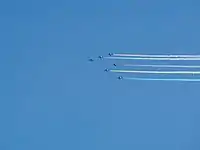
On the day of the ceremony, there was an exhibition flight by Blue Impulse, the aerobatics squadron of the Japanese Air Self Defense Force. The squadron drew the Olympic Rings over the Tokyo skies, marked the 57th anniversary of the 1964 Games for the first time in Tokyo.[60][61]
"Where the Stories Begin"
A stop motion video begins showing many geometric shapes drawn in chalk, before showing a birds eye shot of the stadium. The camera zooms in on National Stadium, while a flock of doves fly by. The camera zooms into the grass ground where it focuses on a seed. Cutting to a live shot, an athlete is lit in green, while a projection of a seedling growing is shown behind the athlete.[62]
A videotaped montage of Tokyo's recap to hosting the Games began, from awarding the rights in 2013 during the 125th IOC Session, to the hard work and training of the athletes, to the Olympic Games Rio 2016, to the qualification of the athletes and then, the chaotic events of 2020 when the world suddenly changed, which caused the athletes to continue training from home via video communication. A countdown from '21' referencing the postponement of games played, showing athletes overcoming the challenges of the past year. At 0, 694 fireworks then are then set off.[62][63]
"Apart but Not Alone"
.jpg.webp)
The first performance of the ceremony, designed "[showcase] Japan's forte in digital art and projection mapping technology,"[64] featured a digital graphics projection on the stadium floor, at the centre of which nurse and boxer Arisa Tsubata, who won a national championship only two years after taking the sport,[65] but was unable to participate as an athlete after being eliminated in the first round of the Asia & Oceania Boxing Olympic Qualification tournament held prior to the pandemic and the games' postponement, jogged on a treadmill,[66][67] then was joined by performers on an exercise cycle, rowing machine, running in place, while performers abstract danced and coloured ball of light were projected,[66] "symbolising the athletes' plight in training during the pandemic for this event."[64] A dance presentation was performed with dancers wearing white outfits connected by red strings, meant to "portray the inner workings of the body and heart."[68]
"A Welcome from the Host"
The following act featured the Japanese national flag and was carried by six bearers. They are:
- Yoshinobu Miyake, two time Olympic weightlifting champion
- Naoko Takahashi, Olympic marathon champion
- Momoha Tabata, Youth Olympic curling medallist
- Hibiki Sakai, percussionist
- Keita Dohi, Youth Olympic sport climbing champion
- Mizuki Asaba, a rescue worker who was involved in search and rescue (SAR) mission of the victims of the 2011 Tōhoku earthquake and tsunami
Then, veteran singer Misia, who wore a dress designed "to honour the LGBTQ+ community and symbolise the fight for LGBTQ+ equality" made by openly gay costume designer Tomo Koizumi,[69] singing the National Anthem of Japan while the flag was raised up by the members of the Japan Self-Defense Forces.[64] After the Japanese National Anthem was sung,[68] a tribute was paid for those who had died from COVID-19, the 2011 Tōhoku earthquake and tsunami,[64] and especially for the victims of the Munich 1972 massacre, one year before the 50th anniversary of that massacre. The actor Mirai Moriyama appeared up dressed in white and,[8] after striking a pose of mourning,[50] performed a butō dance in the middle of the stadium, while tenebrous and funereal music played. Subsequently, a moment of silence was observed at the culmination of this section of the ceremony.[8]
"A Lasting Legacy"
.jpg.webp)
The unveiling of the Olympic Rings, which were made from trees planted from seeds during the 1964 Olympics, followed. It starred tap-dancing performers wearing hanten coats, which were traditionally worn by Edo-era craftspeople and carpenters and evoked Japanese summertime festivals, at which this style of clothing is common,[69][64] as they built what has either been described as a mock Olympic Village[68] or a matsuri, as the rings were brought while being surrounded by Japanese paper lanterns.[70]
A pre-recorded video was shown of Muhammad Yunus receiving the Olympic Laurel award in Bangladesh, because Yunus could not travel to Japan due to travel restrictions related to the COVID-19 pandemic in that country.[71][72]
"Here Together"
Parade of Nations

The Parade of Nations followed with the team delegations marching into the stadium.[64] Before the athletes marched, a videotaped section was shown showcasing how the world trained for these challenging Olympics.
Athletes entered the stadium in an order dictated by the Olympic tradition. As the originator of the Olympics, the Greek team entered first. Other teams entered in order of the Gojūon system based on the names of countries in the Japanese language, the first time this happened as previous Olympics held in Japan have used the English language.[73] Following tradition, the delegation from the host nation Japan entered last.
The Refugee Olympic Team, composed of refugees from several countries, was the second nation to enter, after Greece. For the first time ever in the opening ceremony, the countries that will host the next two Olympic Games, France (in 2024) and the United States (in 2028), marched immediately before the host nation Japan entered,[64] instead of entering one-hundred-fifty-fourth (between Brazil and Bulgaria) and seventh (between Afghanistan and United Arab Emirates), respectively, according to the Japanese alphabet order.[74] The names of the teams were announced in French, followed by English and Japanese, the official languages of the Olympic movement and the host nation, in accordance with traditional and International Olympic Committee (IOC) guidelines.
Each of the signboards displaying the countries' names was written in Japanese on one side and English on the other, enclosed in speech balloons, evoking manga panels,[69] while the signholders' costumes had manga tones.[65]
The athletes themselves attended in low numbers compared to previous Olympics, as out of Team USA's 613 and Australia's 472, only about 200 and 63 attended, respectively.[75]
In their entrances, several teams, including Argentina[76] and Ghana,[65] broke into song, while the Twitter account for the Games pointed out an Eritrean athlete who laid down on the ground,[77] which other athletes had done as well while looking at their phones.[50] As Russia had been banned to partake in sporting events by the World Anti-Doping Agency, Russian athletes marched under the ROC designation and flag.[78] Japan inverted the colours of the uniform they had used in the 1964 Olympics,[79] while France paraded in three rows, representing the tricolor flag.[80] Two flagbearers, Tonga's Pita Taufatofua and Vanautu's Riilio Rii, paraded shirtless and oiled.[75] Noticeably, several members of the Kyrgyz and Tajik delegations as well as the Pakistani flagbearers entered the ceremony maskless.[81] During the parade of nations, Mohamad Maso of Syria was reunited with his brother, Alaa, who represented the IOC Refugee Olympic Team.[82]
For the first time, each team had the option to allow two flag bearers, one male and one female, in an effort to promote gender equality.[83]
Before the athletes paraded in, a sign inside the stadium pointed out that the athletes should keep social distance between themselves and how far was the entrance as well as the restroom.[65]
In addition, 19 tracks from popular Japanese video game series were also used during the duration of the two hour-long segment, these being:[69][84][85][86][87]
- Dragon Quest – "Roto's Theme"
- Final Fantasy – "Victory Fanfare"
- Tales of Zestiria – "Sorey's Theme – The Shepherd"
- Monster Hunter – "Proof of a Hero"
- Kingdom Hearts – "Olympus Coliseum"
- Chrono Trigger – "Frog's Theme"
- Ace Combat – "First Flight"
- Tales of Graces – "Royal – Capital Majestic Grandeur"
- Monster Hunter – "Wind of Departure"
- Chrono Trigger – "Robo's Theme"
- Sonic the Hedgehog – "Star Light Zone"
- Pro Evolution Soccer – "eFootball Walk-on Theme"
- Final Fantasy – "Main Theme"
- Phantasy Star Universe – "Guardians"
- Kingdom Hearts – "Hero's Fanfare"
- Gradius – "01 Act I-1"
- Nier – "Song of the Ancients"
- SaGa – "The Minstrel's Refrain: SaGa Series Medley 2016"
- Soulcalibur – "The Brave New Stage of History"
These also became the last parade involving Afghanistan before the Taliban re-invasion of Kabul several weeks after the games.
Motto and oath
The Parade of Nations finished with the projection of the Olympic motto, "Faster, Higher, Stronger – Together" in the middle of the stadium floor, between the athletes, which were organised into quadrants after they marched in.[64] A message from Kirsty Coventry, the outgoing chair of the IOC Athletes' Commission was played, introducing the new Olympic Oath with the aim of promoting inclusion and the role of Athletes, Judges and Coaches as ambassadors.[88] The following oath was delivered by 6 participants from the Tokyo delegation:[89]
We promise to take part in these Olympic Games, respecting and abiding by the rules and in the spirit of fair play, inclusion and equality. Together we stand in solidarity and commit ourselves to sport without doping, without cheating, without any form of discrimination. We do this for the honour of our teams, in respect for the Fundamental Principles of Olympism, and to make the world a better place through sport.
"Imagine"
Groups of all ages entered the stadium dancing around boxes, which were organised into three circles and then into the Olympic Games Tokyo 2020 emblem logo.[50] Then, mirroring the previous segment, 1,824 drones made a 3D rendition of the Olympic Games Tokyo 2020 emblem logo over the stadium and then the globe of Earth with its continents.[64]
Following this what Time Out Japan called an "emotional montage",[64] featuring a "half-live, half-recorded performance"[66] of "Imagine", composed by John Lennon, was sung by Angélique Kidjo (Africa), Alejandro Sanz (Europe), John Legend (Americas), and Keith Urban (Oceania), all of whom joined remotely via pre-recorded material; plus the Suginami Junior Chorus, who was live in the stadium.[90] It was arranged by Hans Zimmer,[8][91] and had musical support provided by TAIKOPROJECT and the Synchron Stage Orchestra and Stage Choir.[90] "Imagine" had previously appeared at other Olympic ceremonies, including the 1996 Summer Olympics closing ceremony in Atlanta, the 2006 Winter Olympics opening ceremony in Torino, the 2012 Summer Olympics closing ceremony in London, and the 2018 Winter Olympics opening ceremony in PyeongChang.[90]
"Peace Through Sport"
Seiko Hashimoto, President of the Tokyo Organising Committee of the Olympic and Paralympic Games and Thomas Bach, IOC president, then gave speeches.[64] Hashimoto briefly spoke about the Tokyo Olympics as an example of overcoming difficulties, as the pitch to host the Olympics was for it to form part of the rebuilding effort after the 2011 Tōhoku earthquake and tsunami. She also called for the Olympic Truce to be observed.[92] Bach in his 13-minute speech, highlighted that the Olympic movement showed the unifying power of sport, and expressed his gratitude to healthcare workers, the volunteers and described participating refugee athletes as an enrichment for society.[50][93] Both speeches were scheduled to last a combined total of nine minutes, but in the ceremony the segment took over twice as long.[50][94]
The opening declaration of the 2020 Olympic Games, limited to a prescribed statement of around 17 words, laid down in the Olympic Charter, was made by Emperor Naruhito. He was the third Japanese Emperor to open an Olympics, following his grandfather Emperor Hirohito (1964 Summer and 1972 Winter Olympics) and his father Emperor Akihito (1998 Winter Olympics). He was also the honorary patron of Tokyo 2020 Olympic and Paralympics.[4]
"私は、ここに、第32回近代オリンピアードを記念する、東京大会の開会を宣言します。" - "I hereby declare the opening of the Tokyo Games, commemorating the XXXII Modern Olympiad."
— His Majesty the Emperor Naruhito
After Naruhito declared the Games open, 288 fireworks were set off.[95]
The Olympic Flag then entered the stadium. Many of the flag bearers were both athletes and front-line nurses, doctors and healthcare workers during the pandemic. The flag bearers were:[96]
- Asia: Kento Momota, Badminton
- Oceania: Elena Galiabovitch, Shooter and Physician[97]
- Americas: Paula Pareto, Judoka and Physician[98]
- Africa: Mehdi Essadiq, Triathlon
- Europe: Paola Egonu, Volleyball
- IOC Refugee Olympic Team: Cyrille Tchatchet II, Weightlifter and Nurse[99][100]
It was then handed to front line workers from Japan and was raised by the Japan Guard.[96] The Olympic Anthem was sung in English by the choir composed of high school students from Tokyo and Fukushima.[88][96]
Finally, while an English recording of Susan Boyle performing the Japanese folk song Tsubasa o Kudasai (Wings to Fly) played, doves were projected on the stadium floor, before thousands of paper doves fluttered into the stadium.[101][102]
"Let the Games Begin" and "Time to Shine"
A video sequence showed the history of the Olympic pictograms had been introduced at the Olympic Games 1964 (also in Tokyo), followed by a live-action recreation of the 50 pictograms used for the events of this Olympic Games.[103] Out of the 50 pictograms, 48 were acted out by the performers using camera angles and various props, some done live in the middle of the stadium, others in prerecorded segments additionally with hand gestures, finger tutting, studio lights, and karate gi. During one prerecorded segment, parts of the song "Camptown Races" could be briefly heard while the equestrian-related pictograms were recreated. The first pictogram shown, the one for the modern pentathlon, was initially depicted as a static image before the performer portraying the running figure moved out of place, setting up the nature of the performance, while the one for sailing was found printed on a propsman's shirt. The segment was directed by HIRO-PON, (from Gamarjobat) [104] with the segment being called "a funny, witty performance reminiscent of a typical Japanese TV game show" like Kasou Taishou.[64]
Following this, a lighting technician played by the comedian Hitori Gekidan was seen on camera to switch on the lights for several Tokyo and national landmarks across Japan.[64] The Olympic champion and former figure skater Shizuka Arakawa was also involved in this sketch.
A performance by kabuki actor Ichikawa Ebizō XI, acting out an excerpt from Shibaraku, was accompanied by jazz pianist Hiromi Uehara, playing a rendition of a tune from her album Spectrum. The segment, "intended to dispel negative energy," symbolised the mixing of both traditional Japanese performing arts and the Japanese affection towards modern jazz.[50][64][105]
"Hope Lights Our Way"

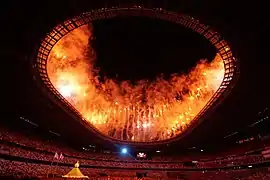
Before the flame arrived at the stadium, a recap video played showcasing the flame's journey across Japan featuring the song Teo Torriatte (Let Us Cling Together) performed by Queen. The flame was brought into the stadium at the end of the torch relay by wrestler Saori Yoshida and judoka Tadahiro Nomura. It was carried by a trio of Japanese baseball greats (Shigeo Nagashima, Sadaharu Oh, and Hideki "Godzilla" Matsui), a doctor and a nurse, paralympian Wakako Tsuchida, and a group of students from Iwate, Miyagi, and Fukushima prefectures who were born shortly before the 2011 Tōhoku earthquake and tsunami. Finally, Japanese tennis player Naomi Osaka carried it up the steps to light the Olympic cauldron;[102][106] Osaka herself would compete for Japan in the Olympics before being eliminated in the third round of the women's tennis competition.[107] Three hours later, the badminton player Ayaka Takahashi lit another cauldron, outside the stadium which was off-limits to guests.[108]
In December 2018, organisers had stated that although the Olympic cauldron would be officially lit and extinguished at the stadium, the flame would be transferred to a separate, public cauldron (following the lead of the 2010 Winter Olympics in Vancouver and the 2016 Summer Olympics in Rio) at Ariake West Canal, on the Tokyo riverfront while the Games were in progress, and transferred back to Olympic Stadium for the closing ceremony. Organisers cited "physical difficulties" to keeping the flame at the New National Stadium due to the current Japanese legislation about fire effects use.[109] Due to the state of emergency, the cauldron was off-limits to guests and situated outside the Olympic Stadium.[108]
The cauldron was designed by Canadian-Japanese designer Oki Sato, who attended Waseda University, the same university as Yoshinori Sakai, the cauldron-lighter in 1964.[1] The steps to reach the cauldron, symbolising Mount Fuji, were "designed to evoke the image of a blooming sakura flower."[69]
The music featured in the cauldron lighting included Boléro by Maurice Ravel, "Rise of the Planet 9" from Dr. Copellius, composed by Isao Tomita, followed by the fireworks featuring the music of Takashi Yoshimatsu's Symphony No. 2 "At terra".
Dignitaries in attendance

Even though the stadium had normally had a capacity for 68,000 spectators, however only 800 foreign and 150 local officials,[110] who were deemed "Games stakeholders", were in attendance, as well as 3,500 members of the media and 6,000 members of team delegations, totalling 10,400.[50] Even though it is customary for Olympic sponsors to send corporate representatives as well, companies such as Toyota, Panasonic, Procter & Gamble, NEC, and Fujitsu, opted out of attending.[110] A scoreboard in the stadium warned the attendees to "Clap, Do not sing or chant".[65]
Host country dignitaries
 Japan
Japan
- Emperor Naruhito[111]
- Prime Minister Yoshihide Suga[112]
- Governor of Tokyo Yuriko Koike
- President of the Tokyo Organising Committee of the Olympic and Paralympic Games Seiko Hashimoto[113]
- Minister of State for the Tokyo Olympic and Paralympic Games Tamayo Marukawa
- President of the Japanese Olympic Committee Yasuhiro Yamashita
Dignitaries from abroad

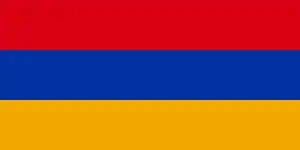 Armenia – President Armen Sarksyan[114]
Armenia – President Armen Sarksyan[114].svg.png.webp) Australia – Minister for Sport Richard Colbeck and Queensland Premier Annastacia Palaszczuk[115]
Australia – Minister for Sport Richard Colbeck and Queensland Premier Annastacia Palaszczuk[115]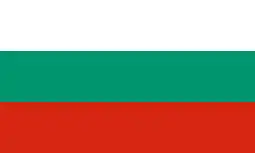 Bulgaria – Minister of Youth and Sports Andrey Kuzmanov[116]
Bulgaria – Minister of Youth and Sports Andrey Kuzmanov[116].svg.png.webp) Canada – Minister of Employment, Workforce Development and Disability Inclusion Carla Qualtrough[117]
Canada – Minister of Employment, Workforce Development and Disability Inclusion Carla Qualtrough[117]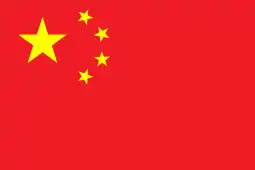 China – Chinese Olympic Committee (COC) President Gou Zhongwen[118]
China – Chinese Olympic Committee (COC) President Gou Zhongwen[118]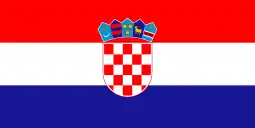 Croatia – Former president and member of the International Olympic Committee Kolinda Grabar-Kitarović[116]
Croatia – Former president and member of the International Olympic Committee Kolinda Grabar-Kitarović[116] Finland – Minister of Science and Culture Antti Kurvinen[119]
Finland – Minister of Science and Culture Antti Kurvinen[119] France – President Emmanuel Macron[111]
France – President Emmanuel Macron[111]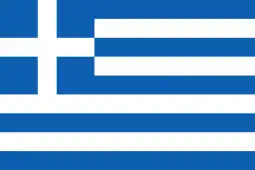 Greece – Deputy Minister of Culture and Sport Lefteris Avgenakis[116]
Greece – Deputy Minister of Culture and Sport Lefteris Avgenakis[116] India – Minister of Sports Anurag Thakur[120]
India – Minister of Sports Anurag Thakur[120] Italy – Secretary for sports Valentina Vezzali[116]
Italy – Secretary for sports Valentina Vezzali[116] Jordan – Prince Faisal bin Hussein (representing The King of Jordan)[121]
Jordan – Prince Faisal bin Hussein (representing The King of Jordan)[121]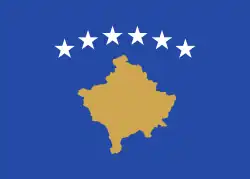 Kosovo – President Vjosa Osmani[122]
Kosovo – President Vjosa Osmani[122]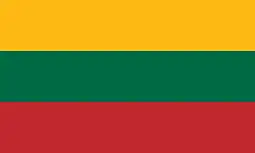 Lithuania – Vice Minister for Science, Education, and Sport Linas Obcarskas[116]
Lithuania – Vice Minister for Science, Education, and Sport Linas Obcarskas[116] Luxembourg – Grand Duke Henri[116]
Luxembourg – Grand Duke Henri[116]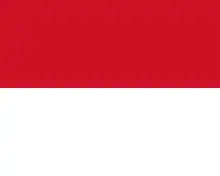 Monaco – Sovereign Prince of Monaco Albert II[123]
Monaco – Sovereign Prince of Monaco Albert II[123]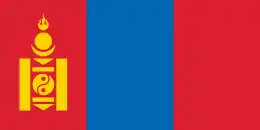 Mongolia – Prime Minister Luvsannamsrain Oyun-Erdene[124]
Mongolia – Prime Minister Luvsannamsrain Oyun-Erdene[124]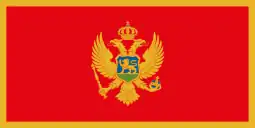 Montenegro – Prime Minister Zdravko Krivokapić[122]
Montenegro – Prime Minister Zdravko Krivokapić[122] Poland – President Andrzej Duda[111]
Poland – President Andrzej Duda[111]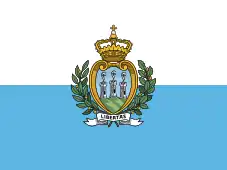 San Marino – Captains Regent Gian Carlo Venturini and Marco Nicolini[125]
San Marino – Captains Regent Gian Carlo Venturini and Marco Nicolini[125]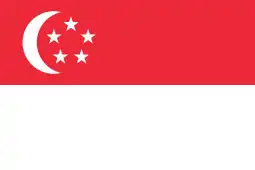 Singapore - Speaker of the Parliament Tan Chuan-Jin[126]
Singapore - Speaker of the Parliament Tan Chuan-Jin[126]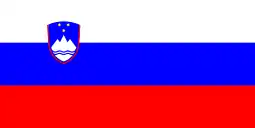 Slovenia – Minister for Research, Education and Sport Simona Kustec[116]
Slovenia – Minister for Research, Education and Sport Simona Kustec[116]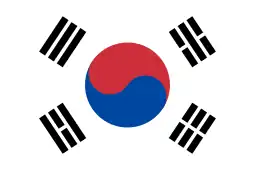 South Korea – Minister of Culture, Sports and Tourism Hwang Hee[127]
South Korea – Minister of Culture, Sports and Tourism Hwang Hee[127]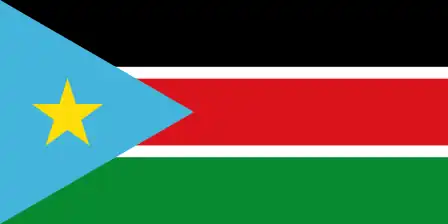 South Sudan – Fourth Vice President Rebecca Nyandeng De Mabior[128]
South Sudan – Fourth Vice President Rebecca Nyandeng De Mabior[128].svg.png.webp) Switzerland – President Guy Parmelin[129]
Switzerland – President Guy Parmelin[129]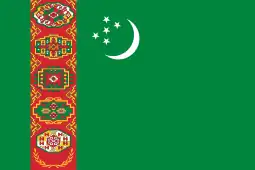 Turkmenistan – Deputy Prime Minister Serdar Berdimukhamedov[130]
Turkmenistan – Deputy Prime Minister Serdar Berdimukhamedov[130] United Kingdom – Minister for Sport Nigel Huddleston[116]
United Kingdom – Minister for Sport Nigel Huddleston[116] United States – First Lady Jill Biden (representing the President of the United States of America)[111]
United States – First Lady Jill Biden (representing the President of the United States of America)[111]
Dignitaries from International organizations
 International Olympic Committee – President Thomas Bach[94] and IOC members, Chair of the IOC Ethics Commission and Former Secretary-General of the United Nations Ban Ki-moon[131][132]
International Olympic Committee – President Thomas Bach[94] and IOC members, Chair of the IOC Ethics Commission and Former Secretary-General of the United Nations Ban Ki-moon[131][132]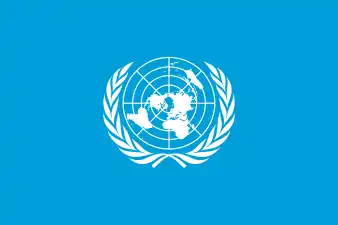 United Nations – High Commissioner for Refugees Filippo Grandi[128]
United Nations – High Commissioner for Refugees Filippo Grandi[128] World Health Organization – Director-General Tedros Adhanom Ghebreyesus[110]
World Health Organization – Director-General Tedros Adhanom Ghebreyesus[110]
Anthems
 National Anthem of Japan – Misia[96]
National Anthem of Japan – Misia[96] Olympic Anthem – Fukushima Students' Choir[96]
Olympic Anthem – Fukushima Students' Choir[96]
Controversies
Outside the venue, protests opposing the Olympics being run during the COVID-19 pandemic was held in the southwestern corner of the stadium, timed to coincide with the ceremony.[65] The protesters' chant, "Go to hell, IOC", could be heard by media inside the stadium during some of the quieter moments.[133]
Another scandal involving musicians was the dismissal of Senegalese-born Japanese percussionist, Latyr Sy, allegedly due to the organizers' reticence in having an "African" in the ceremony. He had been hired in May and had the rehearsal schedule sent to him in April, however, upon enquiring about signing his contract in May, he was informed that his inclusion in the program had been rejected due to his ethnicity.[134][135] A spokesperson of the organising committee later gave background to Sy's claim saying, "We had planned a music part in which many singers would participate, but due to infectious disease control and budget, we cancelled the part itself. Therefore we cancelled the appearance of all the participants in the music part."[136]
When Emperor Naruhito began the opening declaration, Prime Minister Yoshihide Suga and Governor of Tokyo Yuriko Koike remained seated, and only stood halfway through. On Japanese social media, some criticized their confusion as disrespectful to the Emperor.[137] Governor Koike spoke later to press that she felt embarrassed standing up halfway through.[138] The organizing committee later apologized for the wording at the end of Thomas Bach speech as he could not make an announcement in the stadium to encourage everyone to stand up before the Emperor spoke.[139]
Ceremony key team
Source:[2]
- Tomoyuki Tanaka, musical director[104]
- Gamarjobat's HIRO-PON, guest appearance[104]
- Kei Shibata
- Kentarō Kobayashi, Opening Ceremony Director[lower-alpha 1][104]
- Mansai Nomura, adviser[27]
- Yuichi Kodama, film director[104]
- Akihiro Fukube
- Akihiro Hamabe
- Hiroshi Nakamura, assistant musical director[104]
- Iguchi
- Junji Kojima, film director[104]
- Keiji Wakabayashi
- Koichiro Tsujikawa, film director[104]
- Marco Balich, senior adviser to the executive producer
- Marihiko Hara, composer[104]
- Masayuki Kagei, composer[104]
- Nami Tomizawa, set designer[140]
- Noboru Tomizawa
- Piera Shepperd, senior adviser to the executive producer
- Seigen Tokuzawa, composer[104]
- Shintaro Hirahara, director of choreography[104]
- Takayuki Hioki, executive producer
- Takayuki Suzuki
- Takuji Higuchi, executive writer[104]
- Toshihiko Sakura
- Tugihisa Tanaka
- Yohei Taneda, scenographer[104]
- Announcers
Reception
The ceremony was panned as being solemn and muted in comparison to previous Olympic ceremonies, with the lack of audience due to the state of emergency being a factor in the atmosphere, to the point that journalist Ian Dunt compared it to attending a funeral.[142] It was also largely panned for being too long and confusing. Japanese Entertainment writer Elizabeth Matsumoto was confused by some elements of the ceremony such as the Matsuri segment, questioning why to focus on carpentry and if the tap dancing was necessary.[143] Others criticized Bach's 13 minute speech where some athletes sat down during the segment.[144][94]
Those who understood that the ceremony would be more muted, such as Jen Chaney from Vulture, opined that while it was largely entertaining and showed the perseverance of the human spirit, it also showed the pessimism and difficulties of holding the Summer Olympics during a pandemic, summarizing the theme of the ceremony as asking the question "What exactly are we doing here, and why?"[66]
Some did give positive reviews to the celebratory segments, including a segment featuring dancers re-creating the poses of the Games' pictograms.[145][146] Moreover, some Japanese reviewers felt that Misia's performance of the Japanese Anthem was excellent and dignified given the difficulties of performing the anthem live.[143] Others felt that the ceremony showed an unmistakably contemporary and diverse view of Japan, finishing with Osaka lighting the cauldron, who is biracial and has opened up about her mental health.[147]
Broadcasting
In Japan, state broadcaster NHK aired the opening ceremony in 8K with 22.2 surround sound and hybrid log-gamma (HLG) HDR.[148][149] Despite wide opposition to the Olympics by residents, the opening ceremony was seen in Japan by at least 73.27 million viewers nationwide, with NHK peaking at a 61% audience share during a segment featuring Miki Maya and at the start of the parade of nations. CEO of Olympic Broadcasting Services (OBS) Yiannis Exarchos stated that the opening ceremony was the most-watched Japanese television broadcast in the last 10 years. Locally, it was reported that the opening ceremony had achieved a 56% audience share in the Kantō region, making it the most-watched television broadcast in the region since the opening ceremony of the 1964 Summer Olympics.[150]
South Korean broadcaster MBC faced criticism for showing profiles of countries with insensitive or stereotypical facts and images during the parade of nations, such as Italy being represented by a picture of pizza, Portugal being represented by a picture of egg tarts, Romania represented by a picture of Dracula, Ukraine represented by a photo of the Chernobyl disaster, Syria's profile mentioning the Syrian civil war, and Haiti described as having an "unstable political situation due to the assassination of the president". MBC CEO Park Sung-jae apologized for the imagery, stating that the network had "damaged the Olympic values of friendship, solidarity and harmony" with the images, which had been intended to help viewers identify the countries.[151][152]
In the United States, NBC announced that it would broadcast and stream the opening ceremony live in all time zones, (6:55 a.m. Eastern/3:55 a.m. Pacific) in addition to its traditional tape-delayed prime time broadcasts.[153][154][155] With a reported 17 million viewers, ratings declined 36% over the 2016 opening ceremony, while streaming viewers were up by 76%.[156][157]
In Canada, in addition to the main English and French-language broadcasts on CBC Television and Ici Radio-Canada Télé, CBC/Radio-Canada simulcasted the opening ceremony with streaming broadcasts in 8 Indigenous languages: East Cree, Dehcho Dene, Dënësųłinë́ Yałtı, Gwichʼin, Inuktitut, Inuvialuktun, Sahtu Dene and Tłı̨chǫ.[158]
See also
References
- 1 2 3 4 Barker, Philip (15 July 2021). ""Moving Forward" to be theme of all Tokyo 2020 Opening and Closing Ceremonies". Inside the Games. Retrieved 19 July 2021.
- 1 2 3 4 "Tokyo 2020 unveils concepts behind Games' Opening and Closing Ceremonies". Tokyo Organising Committee of the Olympic and Paralympic Games. 14 July 2021. Archived from the original on 18 July 2021. Retrieved 19 July 2021.
- ↑ Panja, Tariq; Rich, Motoko (30 March 2020). "Summer Olympics in Tokyo to Start on July 23, 2021". The New York Times. Retrieved 1 December 2020.
- 1 2 "Japan's emperor to declare opening of Tokyo Olympics". Kyodo News. 14 July 2021. Retrieved 19 July 2021.
- 1 2 "The Tokyo Olympics will be played without an audience". Market Research Telecast. 8 July 2021. Retrieved 11 July 2021.
- 1 2 3 Savage, Nic (17 July 2021). "Mystery surrounds performers for Olympic Games Opening Ceremony". News.com.Au. Retrieved 19 July 2021.
- ↑ "Moment of silence observed at 2020 Opening Ceremony | NBC Olympics".
- 1 2 3 4 Belam, Martin (23 July 2021). "Eleven outstanding moments from the Olympic opening ceremony | Martin Belam". The Guardian. Retrieved 24 July 2021.
- ↑ "Opening & Closing Ceremonies at the Tokyo 2020 Olympics". Tokyo 2020. Archived from the original on 24 July 2021. Retrieved 24 July 2021.
- ↑ Prahl, Amanda (13 February 2020). "A Date Has Been Set For the Opening Ceremony of the 2020 Summer Olympics". POPSUGAR Fitness Australia. Archived from the original on 13 February 2020. Retrieved 17 January 2021.
- ↑ "Mansai Nomura to get creative with Tokyo 2020 Ceremonies". Olympic Channel. Retrieved 24 July 2019.
- ↑ "Kyogen actor Mansai Nomura to oversee Tokyo 2020 ceremonies". The Japan Times. Reuters. 30 July 2018. Retrieved 13 January 2021.
- ↑ "Tokyo 2020: Balich curerà cerimonie – Sport". Agenzia ANSA (in Italian). 10 June 2019. Retrieved 30 January 2020.
- ↑ "Dentsu's creative director for Tokyo Olympic ceremonies steps down after being disciplined overpower harassment". The Japan Times Online. 8 January 2020. ISSN 0447-5763. Retrieved 30 January 2020.
- ↑ "技術提案等審査委員会". www.jpnsport.go.jp.
- ↑ "Tokyo 2020 Olympics opening ceremony ticket price ceiling set at ¥288,000". The Japan Times. 15 May 2018. Retrieved 1 December 2020.
- ↑ "Japanese rush to buy Tokyo Olympic tickets on first day". USA TODAY. Retrieved 1 December 2020.
- ↑ Tomlinson, Alan (1 January 2005). "Picturing the winter Olympics: The Opening ceremonies of Nagano (Japan) 1998 and Salt Lake City (USA) 2002". Tourism, Culture & Communication. 5 (2): 83–92. doi:10.3727/109830405774791465. S2CID 59142832.
- ↑ "Mario and flying cars tipped to appear at Tokyo 2020 Opening Ceremony". www.insidethegames.biz. 2 January 2020. Retrieved 30 January 2020.
- 1 2 "Tokyo 2020 Opening Ceremony Original Plan Leaks in Full". Arama Japan. 9 August 2021. Retrieved 23 August 2021.
- ↑ Tagsold, Christian (2 January 2023). "Akira and the Tokyo Olympics in 1964 and 2020/21: Reading the games through manga and anime—reading manga and anime through the games". Contemporary Japan. 35 (1): 117–135. doi:10.1080/18692729.2023.2168840. ISSN 1869-2729. S2CID 258313153.
- ↑ Kent, Emma (28 July 2021). "Nintendo pulled out of Tokyo 2020 Olympic opening ceremony, report claims". Eurogamer. Retrieved 29 July 2021.
- ↑ "Tokyo Marathon restricted to elite athletes over Coronavirus outbreak". The New York Times. 17 February 2020. Retrieved 14 July 2021.
- ↑ "JOINT STATEMENT FROM THE INTERNATIONAL OLYMPIC COMMITTEE AND THE TOKYO 2020 ORGANISING COMMITTEE". International Olympic Committee. 24 March 2020. Retrieved 24 March 2020.
- ↑ Pavitt, Michael (20 March 2020). "Rescheduled Tokyo 2020 Olympics to open on 23 July 2021". insidethegames.biz. Retrieved 20 March 2020.
- ↑ "Tokyo Games' Mansai Nomura-Led Ceremony Team to Be Disbanded". nippon.com. Jiji Press. 23 December 2020. Archived from the original on 23 December 2020. Retrieved 22 July 2021.
- 1 2 3 Wade, Stephen (23 December 2020). "Tokyo Olympics name Hiroshi Sasaki director for ceremonies". AP NEWS. Retrieved 28 January 2021.
- ↑ "Tokyo Olympics creative director resigns over derogatory remark about female entertainer". Retrieved 18 March 2021.
- ↑ "Tokyo 2020 ceremonies director resigns after derogatory suggestion about female comedian". The Japan Times Online. 17 March 2021. Retrieved 17 March 2021.
- ↑ Ikezawa, Hiroshi (30 June 2020). "Expert calls on Japanese sports industry to innovate after pandemic". The Japan Times. The Japan Times. Retrieved 19 July 2021.
- ↑ "Delegation of maximum six allowed to participate in opening ceremony of Tokyo Olympics". The Statesman. IANS. 19 November 2020. Retrieved 27 November 2020.
- ↑ Houston, Michael (31 March 2020). "Tokyo 2020 Olympic Opening Ceremony must now reference coronavirus, producer says". Archived from the original on 18 August 2020.
- ↑ "Tokyo 2020 unveils concepts behind Games' Opening and Closing Ceremonies". The Tokyo Organising Committee of the Olympic and Paralympic Games. 14 July 2021. Archived from the original on 18 July 2021. Retrieved 17 July 2021.
- ↑ "東京2020大会開閉会式4式典共通コンセプトならびに東京2020オリンピック開閉会式コンセプトを発表" (in Japanese). The Tokyo Organising Committee of the Olympic and Paralympic Games. 14 July 2021. Archived from the original on 23 July 2021. Retrieved 17 July 2021.
- ↑ Chie Yamashita (16 July 2021). "Tokyo Olympics opening ceremony music leader under fire for past bullying". Mainichi. Mainichi Newspapers Co., Ltd. Retrieved 17 July 2021.
- ↑ dimsim3478 (16 July 2021). "Cornelius Olympics Controversy". Sputnikmusic. Retrieved 17 July 2021.
{{cite web}}: CS1 maint: numeric names: authors list (link) - 1 2 Bloom, Ben (17 July 2021). "Japanese composer who abused disabled classmates and forced them to perform sex acts remains involved in opening ceremony". The Telegraph. Telegraph Media Group. Retrieved 17 July 2021.
- ↑ Hidemasa Yoshizawa; Yusuke Saito (17 July 2021). "Olympic composer apologizes for historic actions". The Asahi Shimbun. Retrieved 17 July 2021.
- ↑ "小山田氏の起用、変更なし 組織委「不適切な発言」〔五輪〕" (in Japanese). Jiji Press. 16 July 2021. Archived from the original on 16 July 2021. Retrieved 17 July 2021.
- ↑ Barker, Philip (19 July 2021). "Tokyo 2020 composer quits over bullying disabled children while at school". Inside the Games. Retrieved 19 July 2021.
- ↑ Morgan, Liam (22 July 2021). "Tokyo 2020 fires Opening Ceremony show director for "anti-Semitic" jokes". Inside The Games. Retrieved 22 July 2021.
- ↑ "Advisory Meeting Members". The Tokyo Organising Committee of the Olympic and Paralympic Games glish. Archived from the original on 22 July 2021. Retrieved 22 July 2021.
- ↑ Corky Siemaszko (22 July 2021). "Olympics opening ceremony director sacked for Holocaust joke". BBC.com. BBC glish. Retrieved 22 July 2021.
- ↑ "Tokyo 2020 unveils concepts behind Games' Opening and Closing Ceremonies". Tokyo 2020. Archived from the original on 18 July 2021. Retrieved 16 July 2021.
- ↑ "'United by Emotion': Everything you need to know about the Opening Ceremony for Tokyo 2020". Olympics. Archived from the original on 25 July 2021. Retrieved 24 July 2021.
- ↑ Tarrant, Jack (17 February 2020). "'United by Emotion' chosen as Tokyo 2020 motto". Reuters. Archived from the original on 17 February 2020. Retrieved 24 July 2021.
- ↑ 小林悠太 (Yuta Kobayashi) (22 July 2021). "東京五輪、23日の開会式は予定通り実施 組織委が発表". Mainichi (in Japanese). Mainichi Newspapers Co., Ltd. Retrieved 23 July 2021.
- ↑ "Search for past weather data Tokyo July 23, 2021 (hourly value)". JMA (in Japanese). Retrieved 24 September 2021.
- ↑ Mather, Victor (23 July 2021). "Here's what to expect during the opening ceremony". The New York Times. ISSN 1553-8095. Archived from the original on 24 July 2021. Retrieved 24 July 2021.
- 1 2 3 4 5 6 7 8 "Naomi Osaka lights the cauldron". The New York Times. 23 July 2021. ISSN 1553-8095. Archived from the original on 30 July 2021. Retrieved 30 July 2021.
- ↑ "1. Where the Stories Begin". Tokyo 2020 (in Japanese). Archived from the original on 25 July 2021. Retrieved 31 July 2021.
- ↑ "2. Apart But Not Alone". Tokyo 2020 (in Japanese). Archived from the original on 24 July 2021. Retrieved 31 July 2021.
- ↑ "3. A Welcome From the Host". Tokyo 2020 (in Japanese). Archived from the original on 25 July 2021. Retrieved 31 July 2021.
- ↑ "4. A Lasting Legacy". Tokyo 2020 (in Japanese). Archived from the original on 25 July 2021. Retrieved 31 July 2021.
- ↑ "5-2. Here Together". Tokyo 2020 (in Japanese). Archived from the original on 25 July 2021. Retrieved 31 July 2021.
- ↑ "6. Peace Through Sport". Tokyo 2020 (in Japanese). Archived from the original on 31 July 2021. Retrieved 31 July 2021.
- ↑ "7. Let the Games Begin". Tokyo 2020 (in Japanese). Archived from the original on 24 July 2021. Retrieved 31 July 2021.
- ↑ "8. Time to Shine". Tokyo 2020 (in Japanese). Archived from the original on 31 July 2021. Retrieved 31 July 2021.
- ↑ "9. Hope Lights Our Way". Tokyo 2020 (in Japanese). Archived from the original on 30 July 2021. Retrieved 31 July 2021.
- ↑ Takenaka, Kiyoshi (2 July 2021). "True heroes in Tokyo will be medical workers, says pilot from 1964 Games". Reuters. Retrieved 14 July 2021.
- ↑ "In Photos: Japanese ASDF's Blue Impulse aerobatic team flies over Tokyo". Kyodo News. 23 July 2021. Retrieved 24 July 2021.
- 1 2 Hart, Tory (23 July 2021). "Live blog: Top moments from the Tokyo Olympics Opening Ceremony". NBC Olympics. NBC. Retrieved 15 August 2021.
- ↑ Commentary from the Seven Network.
- 1 2 3 4 5 6 7 8 9 10 11 12 13 14 Steen, Emma (24 July 2021). "In photos: 8 best moments from the Tokyo Olympics opening ceremony". Time Out. ISSN 0049-3910. Archived from the original on 24 July 2021. Retrieved 24 July 2021.
- 1 2 3 4 5 6 Gregory, Sean; Park, Alice; Chen, Aria (23 July 2021). "What You Didn't See on TV at the Tokyo Olympics Opening Ceremony". Time. Archived from the original on 23 July 2021. Retrieved 24 July 2021.
- 1 2 3 4 Chaney, Jen (23 July 2021). "Welcome to the 'What Are We Doing Here?' Olympics". Vulture. Archived from the original on 23 July 2021. Retrieved 24 July 2021.
- ↑ Lane, Barnaby (23 July 2021). "The Japanese boxer who opened the Tokyo Olympics was denied a chance to actually compete in the games because her qualifier was cancelled". Insider Inc. Retrieved 24 July 2021.
- 1 2 3 Wong, Wilson (23 July 2021). "Tokyo Olympics opening ceremony features Naomi Osaka, blue humans and Tongan flag-bearer". NBC News. Archived from the original on 24 July 2021. Retrieved 24 July 2021.
- 1 2 3 4 5 Steen, Emma (24 July 2021). "Explained: the Japanese symbolism you missed at the Tokyo Olympics opening ceremony". Time Out. ISSN 0049-3910. Archived from the original on 24 July 2021. Retrieved 24 July 2021.
- ↑ Wharton, David (23 July 2021). "Tokyo opening ceremony clings to traditions on a backdrop of humility". Los Angeles Times. ISSN 2165-1736. Archived from the original on 28 July 2021. Retrieved 30 July 2021.
- ↑ "Bangladesh's Nobel laureate to become the second recipient of Olympic Laurel". 21 July 2021.
- ↑ "Olympic Laurel Muhammad Yunus will not attend Tokyo 2020 Opening Ceremony". 20 July 2021.
- ↑ "Japanese language to determine order of Olympic parade of athletes". Mainichi Japan. 30 October 2020. Archived from the original on 1 November 2020. Retrieved 3 December 2020.
- ↑ "U.S., France, Japan to march last in 2020 Parade of Nations". The Japan Times. 4 December 2019. Retrieved 21 December 2019.
- 1 2 Ramsay, George (23 July 2021). "Catch up: Here's what happened at the Tokyo 2020 Opening Ceremony". CNN. Archived from the original on 24 July 2021. Retrieved 24 July 2021.
- ↑ Preti, Conz (23 July 2021). "The Argentine athletes brought the party to the Olympic opening ceremony". Insider Inc. Archived from the original on 24 July 2021. Retrieved 24 July 2021.
- ↑ Davis, Scott (23 July 2021). "An Eritrean Olympian laid down on the ground during the marathon Olympic parade of nations". Insider Inc. Retrieved 24 July 2021.
- ↑ Panja, Tariq (26 July 2021). "Russia Is Banned, Yet It's Everywhere at the Games". The New York Times. ISSN 1553-8095. Archived from the original on 30 July 2021. Retrieved 30 July 2021.
- ↑ Ajello, Erin (24 July 2021). "14 details you might've missed during the Tokyo 2020 opening ceremony". Insider Inc. Retrieved 24 July 2021.
- ↑ Rabimov, Stephan (23 July 2021). "Olympics 2021: The Most Stylish Uniforms From The Tokyo Games". Forbes. ISSN 0015-6914. Retrieved 24 July 2021.
- ↑ "Mask-shy Kyrgyzstan, Tajikistan rain on COVID-compliant opening parade". Reuters. 23 July 2021. Retrieved 25 July 2021.
- ↑ "Syrian athlete brothers separated by war hug at Tokyo Olympics Opening Ceremony". Arab News. 25 July 2021.
- ↑ Grohmann, Karolos (4 March 2020). "IOC to allow male/female flagbearers at Tokyo Games". Reuters.
- ↑ "ドラクエ、FF、モンハン日本生まれのゲーム音楽で選手入場/使用曲一覧 – 東京オリンピック2020 : 日刊スポーツ". Nikkan Sports. 23 July 2021. Retrieved 23 July 2021.
- ↑ McWhertor, Michael (23 July 2021). "The Olympic opening ceremony was full of video game music". Polygon. Archived from the original on 24 July 2021. Retrieved 24 July 2021.
- ↑ Park, Gene (23 July 2021). "The music for the Tokyo Olympics Opening Ceremonies? It comes from video games". Washington Post. Archived from the original on 1 August 2021. Retrieved 27 July 2021.
- ↑ Baker, Danica (24 July 2021). "Here's all the video game music played at the Tokyo Olympics opening ceremony". The Brag. Retrieved 27 July 2021.
- 1 2 Palmer, Dan (23 July 2021). "Tokyo 2020 Olympic Games: Opening Ceremony". Inside the Games. Retrieved 31 July 2021.
- ↑ Tapp, Tom (15 July 2021). "Olympic Oath Changed To Highlight Inclusion, Non-Discrimination And Equality For Tokyo Games' Opening Ceremony". Deadline. Retrieved 31 July 2021.
- 1 2 3 "Global artists bring world together in "Imagine" moment during Tokyo 2020 Opening Ceremony". International Olympic Committee. 23 July 2020. Archived from the original on 23 July 2021. Retrieved 24 July 2021.
- ↑ Blistein, Jon (23 July 2021). "John Legend, Keith Urban, Angélique Kidjo Lead 'Imagine' Performance at Tokyo Olympics Opening Ceremony". Rolling Stone. Retrieved 24 July 2021.
- ↑ Hashimoto, Seiko. "Speech by Tokyo 2020 President Hashimoto at the Opening Ceremony of the Olympic Games Tokyo 2020". Tokyo 2020 Online Press Room (in European Spanish). Around the Rings. Retrieved 4 August 2021.
- ↑ Bach, Thomas (23 July 2021). "IOC President's speech - Tokyo 2020 Opening Ceremony - Olympic News". International Olympic Committee. Retrieved 4 August 2021.
- 1 2 3 Slodkowski, Antoni (24 July 2021). "IOC's Bach draws ire in Japan over long opening ceremony speech". Reuters. Retrieved 24 July 2021.
- ↑ "Tokyo Olympics begin officially with the Opening Ceremonies. Naomi Osaka lights cauldron". The Washington Post. 25 July 2021. ISSN 0190-8286. Archived from the original on 25 July 2021. Retrieved 30 July 2021.
- 1 2 3 4 5 "Tokyo 2020 Opening Ceremony Highlights: Naomi Osaka lights Olympic cauldron as Games open". Hindustan Times. 23 July 2021. Retrieved 24 July 2021.
- ↑ Graham, Brett; de Silva, Chris (23 July 2021). "Aussie shooter given huge Olympics honour". World Wide of Sports. Nine. Retrieved 31 July 2021.
- ↑ Nugent, Ciara; Ducharme, Jamie; Gunia, Amy; Kluger, Jeffrey (8 July 2021). "Meet the Olympic and Paralympic Athletes Who Battled COVID-19". Time. Retrieved 31 July 2021.
- ↑ McDaid, David (18 May 2019). "From homeless and suicidal to Olympic hopeful". BBC Sport. BBC. Retrieved 31 July 2021.
- ↑ Ford, Megan (30 July 2021). "London-based nurse to represent refugees in Olympic weightlifting". Nursing Times. Retrieved 31 July 2021.
- ↑ Barker, Philip (23 July 2021). "Wings to Fly accompanies release of the doves at Tokyo 2020 Opening Ceremony". Inside the Games. Retrieved 31 July 2021.
- 1 2 Ingle, Sean (23 July 2021). "Naomi Osaka provides spark at subdued opening of Tokyo Olympics". The Guardian. Retrieved 25 July 2021.
- ↑ "Olympic pictogram sequence: The Opening Ceremony highlight for many, but what was it all about?". Tokyo 2020. Archived from the original on 24 July 2021. Retrieved 24 July 2021.
- 1 2 3 4 5 6 7 8 9 10 11 12 13 14 "New Tokyo 2020 Olympics & Paralympics Ceremonies Committee Revealed". Arama! Japan. Natalie News. 15 July 2021. Retrieved 19 July 2021.
- ↑ "市川海老蔵と上原ひろみの異業種コラボで感じた「多様性と調和」の本質". スポーツ報知 (in Japanese). 24 July 2021. Retrieved 25 July 2021.
- ↑ Rathborn, Jack (23 July 2021). "Naomi Osaka lights Olympic cauldron as Tokyo 2020 Games begin". The Independent. Retrieved 25 July 2021.
- ↑ Goldman, Tom (27 July 2021). "Japanese Tennis Star Naomi Osaka Bounced Out Of Tokyo Olympics". NPR. Retrieved 27 July 2021.
- 1 2 Davies, Tom; McVeigh, Niall; Glendenning, Barry; Kemp, Emma (23 July 2021). "Tokyo Olympics 2020: Naomi Osaka lights cauldron at opening ceremony – live!". The Guardian. Retrieved 23 July 2021.
- ↑ Rowbottom, Mike (18 December 2018). "Tokyo 2020 confirms it will use Olympic flame cauldrons in stadium and on the waterfront". insidethegames.biz.
- 1 2 3 Thisanka, Siripala (23 July 2021). "Tokyo Olympics Opening Ceremony: The Attendees and the No-Shows". The Diplomat. ISSN 1446-697X. Archived from the original on 27 July 2021. Retrieved 30 July 2021.
- 1 2 3 4 Watson, Kathryn (23 July 2021). "First lady Jill Biden participates in Olympics opening ceremony". CBS. Retrieved 24 July 2021.
- ↑ "Fewer than 30 leaders to attend Tokyo opening ceremony". Washington Post. 22 July 2021. Retrieved 24 July 2021.
- ↑ Kornhaber, Spencer (23 July 2021). "The Haunting, Ambivalent Olympics Opening Ceremony". The Atlantic. Retrieved 24 July 2021.
- ↑ "President Sarkissian attends opening ceremony of Summer Olympic Games in Tokyo". ArmenPress. Retrieved 24 July 2021.
- ↑ "'Ask her': Coates says remarks to Palaszczuk were 'misinterpreted by people who weren't in the room'". Australia Broadcasting Corporation. 22 July 2021. Retrieved 23 July 2021.
- 1 2 3 4 5 6 7 8 "Busy that day: Europe's leaders pass on Tokyo Olympics". Politico.eu. 23 July 2021. Archived from the original on 25 July 2021. Retrieved 24 July 2021.
- ↑ "Minister Qualtrough to Cheer on Team Canada at the 2020 Tokyo Olympic Games". Canada.ca. 21 July 2021. Archived from the original on 22 July 2021. Retrieved 25 July 2021.
- ↑ "Top Chinese officials likely to be absent from Tokyo Olympics opening ceremony". scmp.com/. 23 July 2021. Retrieved 26 July 2021.
- ↑ "Minister Kurvinen to visit Tokyo Olympics". Valtioneuvosto. Ministry of Education and Culture (Finland). 20 July 2021. Archived from the original on 21 July 2021. Retrieved 24 July 2021.
- ↑ "Sports Minister Anurag Thakur to watch Tokyo Olympics opening ceremony from National Stadium". The Times of India. 22 July 2021. Retrieved 25 July 2021.
- ↑ "Prince Faisal attends Tokyo Olympics opening ceremony". Jordan News. 24 July 2021. Archived from the original on 30 July 2021. Retrieved 30 July 2021.
- 1 2 "Suga, Macron vow to share Olympics experience, boost defense ties". Kyodo News. 24 July 2021. Retrieved 24 July 2021.
- ↑ Gangitano, Alex (23 July 2021). "Jill Biden attends Tokyo Olympics opening ceremony". The Hill. Retrieved 24 July 2021.
- ↑ Imahashi, Rurika; Regalado, Francesca (23 July 2021). "Tokyo's Olympic flame burns at last after subdued ceremony". Nikkei Asia. Retrieved 24 July 2021.
- ↑ "Olimpiadi: San Marino ha sfilato coi suoi cinque atleti, la Reggenza ricevuta dall'Imperatore". San Marino Rtv (in Italian). 23 July 2021. Retrieved 24 July 2021.
- ↑ "Grand opening for Olympics in an almost empty stadium". The Straits Times. 24 July 2021. Retrieved 8 August 2021.
- ↑ "Pandemic-Delayed Tokyo Olympics Begin". KBS WORLD News. 23 July 2021. Retrieved 24 July 2021.
- 1 2 "Suga kicks off Olympics diplomacy". 22 July 2021.
- ↑ "Swiss president forced to miss meeting with Japanese emperor". Expatica. 23 July 2021. Retrieved 24 July 2021.
- ↑ "Turkmenistan: Tokyo story | Eurasianet".
- ↑ "Mr Ban Ki-moon re-elected as Chair of the IOC Ethics Commission – Olympic News". International Olympic Committee. 20 July 2021. Retrieved 24 July 2021.
- ↑ "Tokyo Olympics open". Yonhap News Agency. 23 July 2021. Retrieved 24 July 2021.
- ↑ Davis, Scott (23 July 2021). "Protesters marched toward the Olympic opening ceremony chanting: 'Go to hell, IOC'". Insider Inc. Retrieved 24 July 2021.
- ↑ Ostlere, Lawrence (23 July 2021). "Tokyo 2020 organisers accused of excluding Olympic opening ceremony musician for being 'African'". The Independent. ISSN 0951-9467. Archived from the original on 24 July 2021. Retrieved 24 July 2021.
- ↑ Cooper, Sam (23 July 2021). "An Olympic opening ceremony musician said he was dropped from the event just because he is Black". Insider Inc. Retrieved 24 July 2021.
- ↑ 「なぜここにアフリカ人」音楽アーティスト訴えは事実と違う IOC&組織委 (in Japanese), Nikkan Sports, 24 July 2021, retrieved 24 July 2021
- ↑ "His Majesty's Opening Declaration, Prime Minister Suga Seated Criticism on the Internet-Olympic Opening Ceremony". Jiji Press. 26 July 2021. Retrieved 7 November 2021.
- ↑ "The Prime Minister and Governor are seated at the beginning of the opening declaration of His Majesty the Emperor, and criticized by SNS for feeling like a lord". nikkan sports (in Japanese). 24 July 2021. Retrieved 7 November 2021.
- ↑ INC (27 July 2021). "The problem of non-standing of the opening declaration, apology of the organization committee for not being able to make the standing announcement". Sankei Shimbun (in Japanese). Retrieved 7 November 2021.
- ↑ "Ceremonies: Count Down". Tokyo Organising Committee of the Olympic and Paralympic Games. Archived from the original on 18 July 2021. Retrieved 19 July 2021.
- 1 2 3 "The voice of the Olympics and Paralympics heard around the world". Japan Today. 1 October 2021. Retrieved 25 October 2021.
- ↑ "'Like attending a funeral': Fans slam 'worst ever' Opening Ceremony". Fox Sports. 23 July 2021. Retrieved 24 July 2021.
- 1 2 "MISIA「君が代」斉唱は絶賛だが…東京五輪開会式で"大損"させられた芸能人(日刊ゲンダイDIGITAL)". Yahoo! Japan (in Japanese). 23 July 2021. Archived from the original on 31 July 2021. Retrieved 31 July 2021.
- ↑ "バッハ会長"長過ぎスピーチ"で…テレビが映さなかった「たまらずゴロ寝」選手続々(SmartFLASH)". Yahoo! Japan (in Japanese). 23 July 2021. Archived from the original on 26 July 2021. Retrieved 31 July 2021.
- ↑ Patten, Dominic (23 July 2021). "Tokyo Olympics Opening Ceremony Review: Naomi Osaka & Tonga Man's Return Couldn't Elevate Downbeat Affair Of NBC's Live Morning Broadcast". Deadline. Retrieved 24 July 2021.
- ↑ Deggans, Eric (23 July 2021). "Somber Tone Lingers At Tokyo Games Opening Ceremony, Though Athletes Add Lift". NPR. Retrieved 24 July 2021.
- ↑ Mercer, Leah (24 July 2021). "Very genki, slightly kitsch, occasionally compelling: the Olympic opening ceremony put humanity in centre frame". The Conversation (Australia). The Conversation Media Group Ltd. Retrieved 1 October 2021.
- ↑ Priestley, Jenny (2 August 2021). "Tokyo 2020 Opening Ceremony 'first mainstream 8K rip on pirate sites'". TVTechnology. Retrieved 16 August 2021.
- ↑ Kurz, Phil (21 July 2021). "NHK To Broadcast 200 Hours Of Tokyo Olympics In 8K". TVTechnology. Retrieved 16 August 2021.
- ↑ "TV viewership for Olympics opening ceremony 56% in Tokyo area". Kyodo News+. Retrieved 26 July 2021.
- ↑ "Tokyo 2020: S Korea TV sorry for using pizza to depict Italy". BBC News. 26 July 2021. Retrieved 26 July 2021.
- ↑ Jake Kwon, Kara Fox and Will Ripley (25 July 2021). "Pizza for Italy and Dracula for Romania. South Korean broadcaster apologizes for its Olympic 'inexcusable mistake'". CNN. Retrieved 26 July 2021.
- ↑ "NBC will air the Summer Olympics Opening Ceremony live in all time zones". Awful Announcing. 10 February 2021. Retrieved 10 February 2021.
- ↑ Tapp, Tom (22 July 2021). "How To Watch The Tokyo Olympics Opening Ceremony On TV & Streaming: NBC To Air Event 4 Times in 24 Hours". Deadline. Retrieved 26 July 2021.
- ↑ Keck, Catie (22 July 2021). "How to watch the Tokyo Olympics opening ceremony". The Verge. Retrieved 26 July 2021.
- ↑ Pallotta, Frank (26 July 2021). "Ratings plunged for the Olympics opening ceremony, but streaming was solid". CNN. Archived from the original on 26 July 2021. Retrieved 26 July 2021.
- ↑ Fischer, Sara (26 July 2021). "Olympics opening ceremony ratings fall to 33-year low". Axios. Retrieved 26 July 2021.
- ↑ "How to connect to the Olympic Games Tokyo 2020". CBC News. 19 July 2021. Archived from the original on 21 July 2021. Retrieved 25 July 2021.
External links
 2020 Olympics opening ceremony takes place in Tokyo at Wikinews
2020 Olympics opening ceremony takes place in Tokyo at Wikinews- Tokyo 2020 Olympics Opening Ceremony (Broadcast) 2021-07-23 19:56-24:00 (JST) (TV program) (in Japanese). Tokyo: NHK. 23 July 2021. Retrieved 30 August 2021.
Copyright 2020IOC and NHK
- In the video on the website ( sports.nhk.or.jp ), You can watch it in the full version of 4 hours 3 minutes 8 seconds.